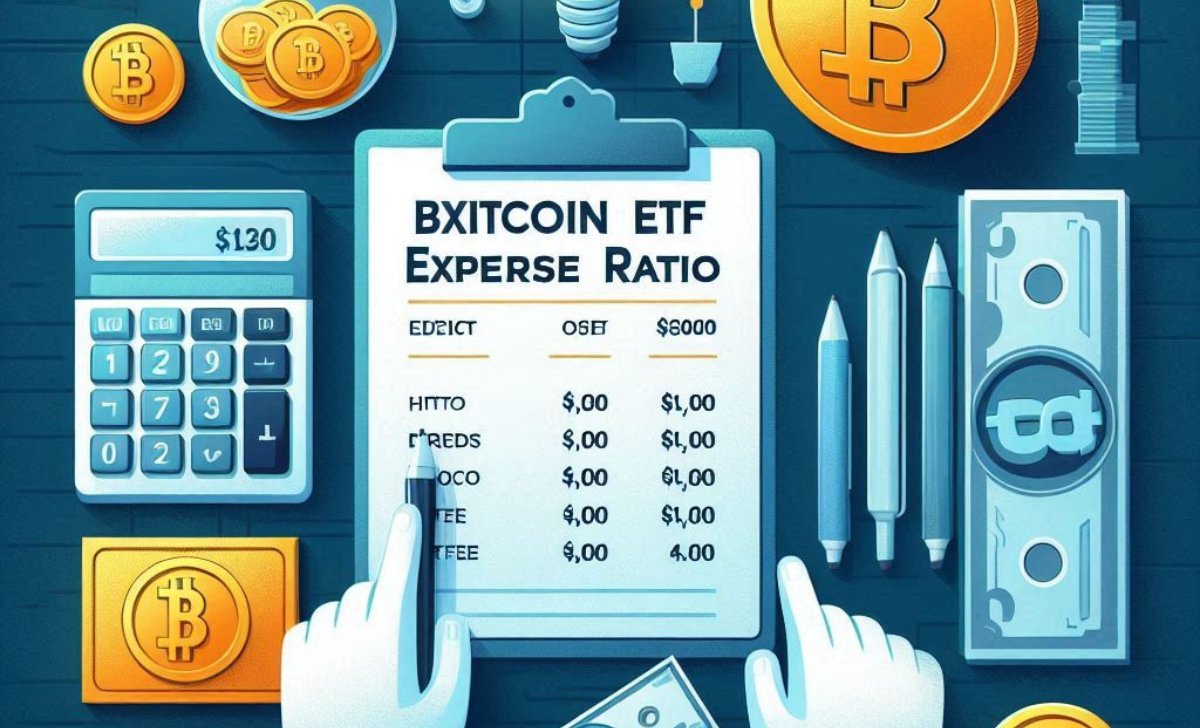Bitcoin ETF fees are an important factor that investors need to consider when participating in Bitcoin ETF funds. These fees can have a significant impact on long-term profits, so understanding them is essential.
In this article, TopCoin9 will help you explore different types of fees, their implications, and strategies to minimize costs while investing in Bitcoin ETFs.
What Are Bitcoin ETF Fees?

Bitcoin ETF fees refer to the costs that investors incur when buying and holding shares of a Bitcoin exchange-traded fund. These fees compensate fund managers for managing the ETF and covering operational expenses.
Why Do Bitcoin ETFs Have Fees?
Unlike directly holding Bitcoin in a personal wallet, Bitcoin ETFs require a structured investment vehicle with a management team, custodians, and regulatory compliance. These costs are passed on to investors through different fee structures.
Types of Fees in Bitcoin ETFs
Bitcoin ETFs typically charge:
- Expense Ratio: An annual fee covering fund management and operational expenses.
- Custody Fees: The cost of securely storing Bitcoin held by the ETF.
- Trading Fees: Costs incurred when buying or selling ETF shares.
- Hidden Fees:Additional costs such as slippage or bid-ask spreads.
While fees may seem minor, they can significantly impact net returns over time. This makes it essential to understand expense ratios in Bitcoin ETFs before making an investment decision. Let’s find out in the next content section!
Understanding Expense Ratios in Bitcoin ETFs

Understanding the Bitcoin ETF expense ratio is just the first step – investors also need to consider other associated costs that can impact overall returns. Let’s break down the different types of fees commonly found in Bitcoin ETFs.
What Is an Expense Ratio?
An expense ratio is the percentage of an investor’s assets deducted annually to cover fund management costs. For example, if a Bitcoin ETF has an expense ratio of 1.00%, an investor will pay $10 annually for every $1,000 invested.
How Expense Ratios Affect Returns
The expense ratio directly reduces net returns. Higher expense ratios mean more fees deducted from your total investment value over time. For long-term investors, even a small difference in expense ratios can result in substantial variations in accumulated wealth.
Factors Influencing Expense Ratios
Below are the factors that affect the expense ratio:
- Fund Structure: Actively managed Bitcoin ETFs often have higher expense ratios compared to passively managed ones.
- Regulatory and Custodial Costs: Storing Bitcoin securely and complying with financial regulations can increase expenses.
- Market Competition: New ETFs may offer lower fees to attract investors.
Since expense ratios are only one component of Bitcoin ETF fees, it’s important to look deeper into additional costs that investors may face. Let’s explore that in the next section!
Breakdown of Common Fees in Bitcoin ETFs

Below are some common types of fees that investors should be aware of when participating in Bitcoin ETFs, helping you gain a better understanding of the costs associated with this fund:
- Management Fees: Management fees cover the costs of running the Bitcoin ETF, including portfolio management and administrative tasks. These fees are typically factored into the expense ratio but can vary depending on the fund provider.
- Custody Fees: Unlike traditional ETFs, Bitcoin ETFs need to securely store digital assets. Custody fees are charged by third-party custodians to ensure the safekeeping of Bitcoin within the fund.
- Trading Fees & Spread Costs: When buying and selling Bitcoin ETFs, investors may incur trading commissions from brokers and costs related to the bid-ask spread, which is the difference between the buying and selling prices. Market demand can also create premiums and discounts, causing ETF prices to fluctuate from their net asset value (NAV).
- Other Hidden Fees: In addition to the common fees, some Bitcoin ETFs may charge redemption fees when investors redeem their shares. Additionally, certain funds may trigger capital gains taxes when assets are rebalanced, impacting overall returns.
Understanding these fees is crucial for making informed investment decisions. If you’re looking for a Bitcoin ETF comparison, analyzing these cost structures will help you evaluate different funds and choose the most cost-effective option in the next part!
Comparing Bitcoin ETF Fees Across Different Funds
Below is a comparison of the Bitcoin ETF fees of some popular funds to help you understand the cost differences between them.
Expense Ratio Comparison of Leading Bitcoin ETFs
Here’s a look at expense ratios among some of the most popular Bitcoin ETFs:
| Bitcoin ETF | Expense Ratio | Additional Costs |
| BlackRock iShares Bitcoin ETF | 0.25% | Low Custody Fees |
| Fidelity Wise Origin Bitcoin Trust | 0.39% | Standard Custody Fees |
| Grayscale Bitcoin Trust ETF | 1.50% | High Premiums & Management Fees |
| Ark Invest Bitcoin ETF | 0.21% | Competitive Trading Costs |
Key Takeaways from the Comparison
- Newer ETFs tend to offer lower expense ratios to attract investors.
- Grayscale’s ETF has the highest expense ratio but provides early institutional access.
- Custody and trading fees can vary even among ETFs with similar expense ratios.
With fees varying significantly across funds, it’s essential to know how to minimize costs when investing in Bitcoin ETFs. Please refer to the following content to understand more about that!
How to Minimize Costs When Investing in Bitcoin ETFs

To optimize the cost of investing in Bitcoin ETFs, here are some strategies to help you save and maximize your profits:
- Choose ETFs with Low Expense Ratios: When selecting a Bitcoin ETF, prioritize funds with low expense ratios to maximize net returns. Funds with an expense ratio under 0.50% are generally more cost-effective.
- Watch for Zero-Fee Promotions: Some ETF providers offer zero-fee promotions for new investors for a limited time. Taking advantage of these promotions can help reduce initial investment costs.
- Optimize Trading Strategies: Avoid frequent trading to reduce commission costs and losses due to price slippage. Using limited orders can help avoid slippage when buying or selling ETFs.
- Consider Tax-Efficient Accounts: Holding Bitcoin ETFs in tax-advantaged accounts (such as an IRA or 401(k)) can help reduce tax liabilities from capital gains. Understanding Bitcoin ETF taxes is crucial, as different funds may have varying tax treatments that impact long-term returns.
In conclusion, Bitcoin ETF fees are an important factor to consider when investing in Bitcoin ETF funds, as they directly impact long-term profits. Understanding the different types of fees and how to optimize them helps investors make informed decisions. Hopefully, you now have a clear understanding of these fees and how to minimize costs when participating in investments.

Emily Thompson is a highly skilled crypto writer and strategist with extensive experience in blockchain journalism, having contributed to Cointelegraph and Binance Academy. At TopCoin9, she ensures high-quality, SEO-optimized content that educates and informs the crypto community.
Email: [email protected]












